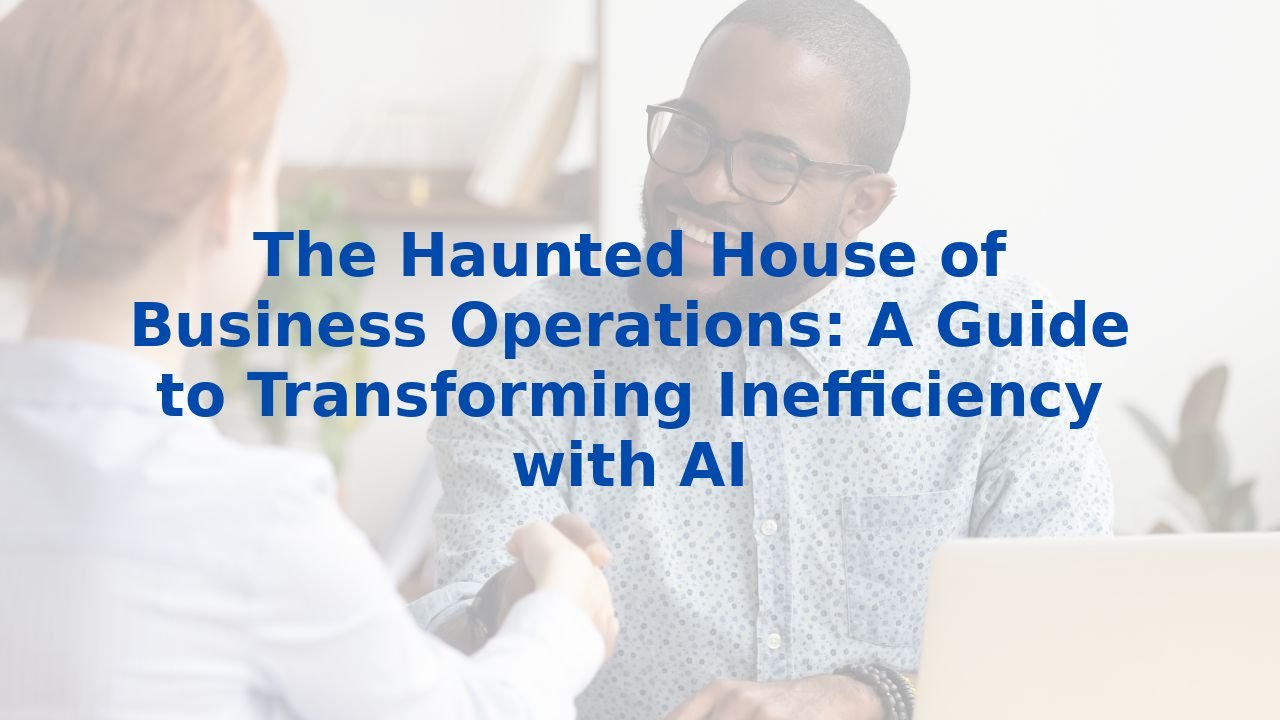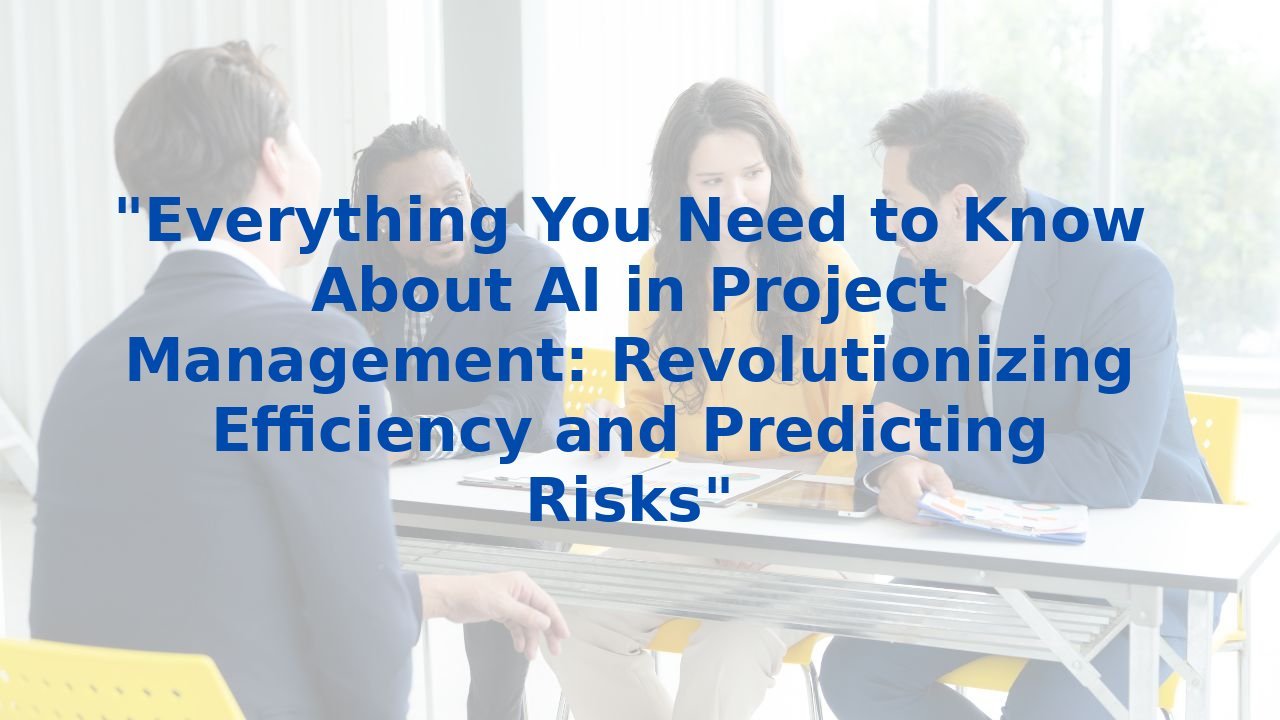The Haunted House of Business Operations: A Guide to Transforming Inefficiency with AI
The Haunted House of Business Operations: A Guide to Transforming Inefficiency with AI
Introduction
In the labyrinthine corridors of business operations, inefficiency can feel like a haunting ghost, lingering just out of sight and holding organizations back from reaching their full potential. However, much like turning on the lights in a spooky old mansion, the introduction of Artificial Intelligence (AI) can illuminate the dark corners of operational inefficiencies, transforming them into a space of productivity and growth. This guide will explore how AI enhances business processes, delivering benefits that reverberate throughout the organization, and highlight the significance of employee training in maximizing these advancements.
Automating Routine Tasks
Imagine a world where the mundane is handled by intelligent systems—this is what AI offers. One of its standout advantages is the ability to automate routine and repetitive tasks. By deploying AI to manage activities like data entry and invoice processing, organizations can dramatically reduce human error and operational delays. With AI handling these tasks, employees are empowered to direct their focus towards strategic initiatives that drive innovation and growth, freeing up precious resources that can be better utilized elsewhere.
Efficiency and Productivity Gains
Efficiency is the name of the game, and in this arena, AI shines exceptionally bright. It accomplishes tasks at an unparalleled speed and scale, outperforming human capability in various settings. For instance, in software development environments, AI's ability to generate test data means developers can devote their energies to more complex and creative problem-solving. By minimizing the burden of mundane tasks, organizations can enhance the productivity of their workforce, all while reducing operational costs and maximizing the value of human talent.
Improved Speed of Business
Speed is a differentiator in today’s fast-paced digital age. AI’s ability to compress timelines allows businesses to respond to market demands with agility that was previously unimaginable. Tasks that once dragged on can now be completed at lightning speed, providing a clear competitive edge. Whether transitioning from design to production or optimizing sales cycles, AI enables organizations to move forward efficiently, ensuring shorter timeframes translate to measurable returns on investment.
New Capabilities and Business Model Expansion
AI doesn't just enhance existing processes; it opens the door to new capabilities and business model expansion. By leveraging the insights from large datasets, organizations can unearth opportunities for new revenue streams and innovative strategies. For example, a data-driven approach can lead companies to pivot into entirely new markets or develop groundbreaking products, ensuring they remain at the forefront of industry trends. The beauty of AI lies in its ability to uncover untapped potentials that can lead to transformative growth.
Better Quality and Reduction of Human Error
No conversation about efficiency would be complete without addressing quality. AI's remarkable ability to drastically reduce human error brings a new level of accuracy to business operations. When introduced alongside robotic process automation, AI refines processes and enhances the overall value proposition of an organization. For example, in finance, AI can ensure nearly error-free reconciliation, fostering confidence that permits focus on strategic endeavors rather than mundane corrections.
Enhanced Communication and Collaboration
Communication within organizations is often fraught with barriers; however, generative AI serves as a powerful bridge. With tools capable of automating routine messages and optimizing meeting schedules, AI facilitates seamless collaboration among teams. By analyzing calendars and factoring in availability, time zones, and priorities, AI ensures that communication remains efficient, allowing employees to work together seamlessly toward shared goals.
Better Planning and Decision-Making
Strategic planning gains a significant boost through the integration of AI, which can analyze historical data and predict future trends. This predictive analytics capability empowers organizations to make informed, data-driven decisions, enabling them to navigate potential risks and seize opportunities as they arise. AI’s role in enhancing decision-making processes can be a game changer, offering insights that positively influence growth trajectories.
Employee Training and Productivity
To fully harness the capabilities of AI, investing in employee training is of paramount importance. A workforce well-versed in AI tools and technologies is better equipped to adapt to procedural changes and capitalize on innovations. AI-driven learning platforms can tailor training materials to individual preferences, resulting in enhanced knowledge retention and engagement. By prioritizing comprehensive training initiatives, organizations can ensure their teams are agile and ready to tackle the challenges posed by an AI-enhanced environment.
Conclusion
In closing, the introduction of AI into the realm of business operations has the potential to transform the haunted house of inefficiency into a thriving hub of productivity and innovation. From automating routine tasks to improving decision-making and fostering enhanced collaboration, AI brings forth a plethora of benefits that organizations cannot afford to overlook. As you embark on this journey towards modernization, do not underestimate the importance of equipping your workforce with the necessary skills to thrive in an AI-driven future. Together, these efforts will unlock new horizons and pave the way for a more dynamic, agile business landscape.



